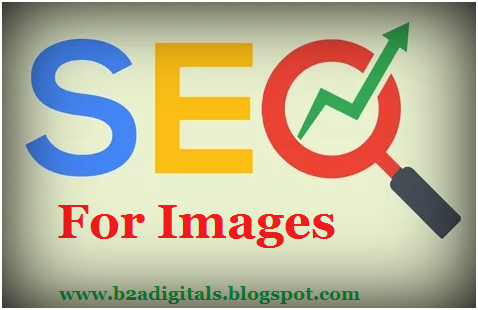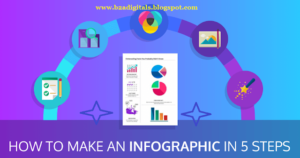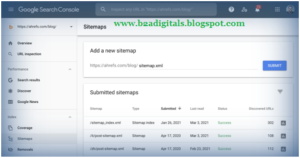First of all let’s discuss Why images are important for SEO.
 |
| SEO for images |
- As we know, SEO is all about text and keywords, but photos do have a part to play.
- Images are a big part of how we feel about a web page. That’s important for SEO as the Google algorithm pays attention to user interface, such as bounce rates and how much time users spend on a web page.
- जैसा कि हम जानते हैं, एसईओ Content और keywords के बारे में है, लेकिन image भी वेबसाइट को रैंक कराने में अहम भूमिका निभाती है।
- Images हमें यह बताती है कि कोई user वेब पेज के बारे में कैसा महसूस करता हैं| Images एसईओ के लिए महत्वपूर्ण है क्योंकि Google एल्गोरिथ्म उपयोगकर्ता इंटरफ़ेस पर ध्यान देता है, जैसे उछाल दर और उपयोगकर्ता वेब पेज पर कितना समय बिताते हैं आदि।
- Yet images can be developed especially to assist with SEO too. Where the daily visitor of your website can see only the image itself.
- Search engine crawlers see text behind the picture you are trying to fill in, showing them what you expect them to see.
- To be successful, you need to do all you can to raise your rating on your website, and the extra boost the platform needs to win the competition would be image optimization.
To ensure the images are optimized for user experience and search, you will to follow these basic steps at the very least.
- Always use images.
- Finding the right image-Use a relevant image that matches your text.
- Alternatives-Use srcset(URL of image) if possible.
- Preparing images for use in your article.
- Choose the right file name-Pick a good file name for your image.
- Choose the right format.
- Scale for image SEO(Reduce file size for faster loading.
- Use responsive images.
- Reduce file size-Reduce file size for faster loading.
- Adding the image to your article.
- Captions-Add a caption, if appropriate, for easier scanning of the page.
- alt text and title text-No need for a title text.
- Add image structured data-Add structured data to your images.
- OpenGraph and Twitter Cards(Twitter Cards are a protocol which allows you to connect to Tweets rich images, videos and other interactive media to drive traffic to your website. Twitter has a wide variety of various cards to sell. In fact, Twitter Cards can be built into your web page with a code of HTML. Users connected with a Tweet to your content will have a Card attached to the Tweet that will be available to all their followers.)
- Alignment (align images right or center).
1. Use unique images that are page-relevant
- Until you begin reading your message, users are much more likely to respond to an image.
- Focusing our thoughts on pictures is of a human nature.
- An attractive picture that novelty connects to your subject will encourage users to share your content, and will definitely leave an impression.
2. Include a concise caption with your image(अपनी Images के साथ संक्षिप्त कैप्शन शामिल करें)
- Search engines will crawl out captions like URLs.
- Anyone using keywords associated with your caption should consider the search results listed on your page.
- The aim is to retain both page relevance as well as image relevance.
3. Choose the Right Format
- Before you can start uploading photos to your web, though, you want to make sure you have selected the right form of file.
- Although there are many image formats to choose from, the most common for the web is the PNG and the JPEG.
- PNG: Produces better quality images, but with a larger file size.
- JPEG: You may lose image quality, but you can adjust the quality level.
4. Create Unique Images
- You want your pictures to pop up on your website. If you fill in stock photos on your page, you’ll appear unoriginal – like thousands of other pages that don’t stand out.
- Too many websites are crowded with images of the same commodity collection.
- The more original photos you have, the better user interface and the better the chances are of ranking on related searches.
5. Beware of Copyright(कॉपीराइट से सावधान रहें)
- No matter what image files you want to use, make sure there is no confusion over copyright.
- You may be given a warning under the Digital Millennium Copyright Act (DMCA) if you have violated any copyright issues.
- If the creator of a piece of content finds the content on your website, they may file a DMCA Takedown that you are forced to comply with.
- Google Photos helps you to sort the results for reuse depending on those available.
6. Compress Your Images
- Before uploading your image just compress your image according to the compatibility of your website.
- According to the HTTP Archive, images represent an average of 21 per cent of the weight of a total website.
- Therefore I strongly recommend that you compact your photos before posting to your site.
- Within Photoshop you can do that, or use a tool like TinyPNG. TingPNG already has a script that you can use in WordPress too.
7. Customize Image File Names(छवि Image name को अनुकूलित करें)
- When it comes to SEO it is extremely important to establish clear, keyword-rich file names.
- Not customizing the name for the image file is like having a burrito that has nothing in it. It’s all pure wasting.
- Image file descriptions alert Google and other search engine crawlers about the image’s subject matter.
8. Write SEO-Friendly Alt Text(SEO-Friendly Alt Text लिखें)
- Alt tags are an alternate text to images where a browser fails to show them properly.
- The alt attribute is used close to the title to define the contents of an image format.
- If the file is not loaded you will get an picture box in the top left corner with the alt tag present.
- Make sure that they match the image and make it meaningful to the frame.
- Also helping the overall on-page SEO Approach is paying attention to alt tags.
- They want to make sure the other aspects of optimization are in order so if the file is not enabled for some reason, consumers can see what the file will be.
- However, by associating keywords with photos, applying correct alt tags to the photos on your website will help your website gain better rankings in search engines. Also in photos Google remarked on the importance of alt text.
- This offers Google valuable details about the image’s subject matter. We use this information to help determine the right picture for a user’s question to return to.
9. Think About the Image File Structure(इमेज फाइल स्ट्रक्चर के बारे में सोचें)
- Google modernized its Image Policy in 2018. One of the major updates they revealed was that they rank images using the path of the file and the file name.
- A true rating element is the file route and the file name.
10. Make Your Page Title & Description(अपना पृष्ठ शीर्षक और विवरण बनाएँ)
- Google also announced the use of the title and definition of the website as part of its image search algorithm.
- The Google Help page states: “Google Images automatically produces a description and paragraph to better describe each answer and how it corresponds to the user query … For this content, we use a variety of different sources, including concise description content, and meta tags.”
- All of the standard on-page SEO variables, such as meta labels, header tags, page copy, structured labels etc.
11. Define Your Dimensions(अपने Images की dimensions को परिभाषित करें)
- Defining the dimensions of the image is needed in the source code.
- If you are not using either, though, defining the width and height is still a best practice. It delivers a better experience for users.
- Besides, it lets browsers display the image before loading the CSS. This stops the page from jumping when it loads.
12. Make Your Images Mobile-Friendly(अपनी Images को मोबाइल के अनुकूल बनाएं)
- It will bring you a high bounce rate and poor conversions at its worst. Yet it will give you, at its highest, more ranking power and greater user experience.
- Issue is, how do you optimize mobile-first index images?
- You construct photos which are sensitive. This means that the picture should align with site size if the user uses a laptop or a cell phone. It corresponds to equipment size.
13. Add Images to Your Sitemap(अपने साइटमैप में Images जोड़ें)
- Either you add your photos to your sitemap, or create a new picture sitemap, you want photos in your sitemaps everywhere.
- Having your images in a sitemap significantly increases the chances that search engines will crawl and index your images. This, results in more traffic on the web.
- Create an image sitemap for crawlability.
- Image optimization is no joke. With advancements in voice recognition technologies, advertising is becoming increasingly relevant and all of the platform will benefit from taking the above measure.
Conclusion
Lifting to the top of the search can be difficult work, but then you begin to see the organic traffic returns worth the effort.


